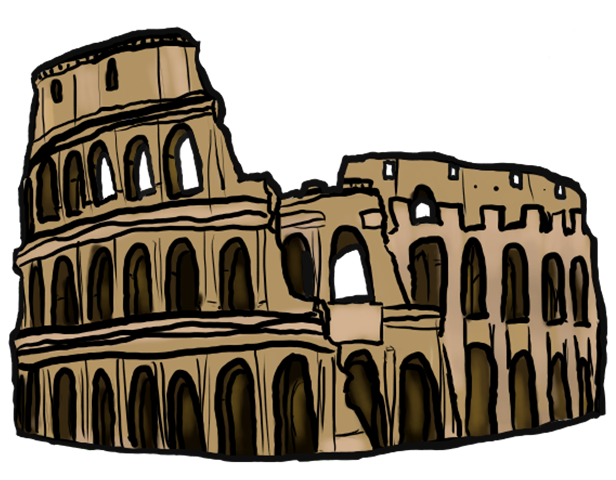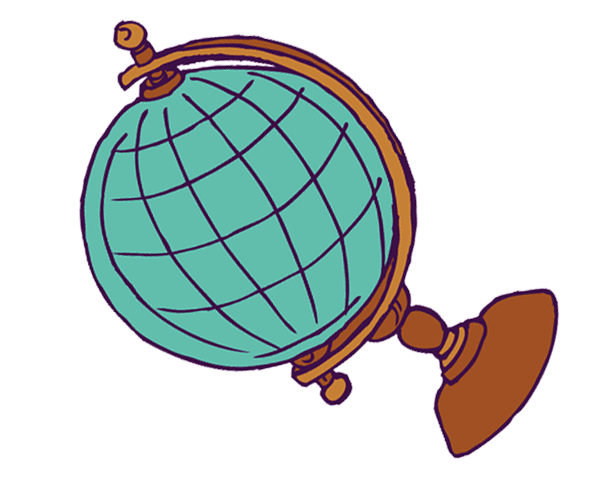Stadium биология егэ
Химия
Биология
Русский язык
Математика базовая
Математика профильная
Физика
История
Обществознание
Литература
География
Английский язык
Информатика
Химия
Биология
Русский язык
Математика базовая
Математика профильная
Физика
История
Обществознание
Литература
География
Английский язык
Информатика
Математика профильная
Английский язык
Русский язык.
Studarium. ru
07.11.2017 13:33:38
2017-11-07 13:33:38
Источники:
Https://studarium. ru/work
ЕГЭ–2022, английский язык: задания, ответы, решения. Обучающая система Дмитрия Гущина. » /> » /> .keyword { color: red; } Stadium биология егэ
Stadium биология егэ
Stadium биология егэ
Ускоренная подготовка к ЕГЭ с репетиторами Учи. Дома. Записывайтесь на бесплатное занятие!
—>
Задание 14 № 4518
Working in the Center for Advancement allowed the author to …
1) make a big difference in students’ lives.
2) make lots of new friends.
3) appreciate donors’ aid.
4) become more successful.
Philanthropy
Philanthropy is defined as the love of humanity. A modern definition is “private initiatives, for the public good, focusing on quality of life”, which combines an original humanistic tradition with a social aspect developed in the 20 th century.
Growing up in this state, I dreamed of attending a college one day. On fall Saturdays at the stadium, I caught a glimpse of the brick buildings and tree-lined walkways. I knew they led to information, knowledge, and a whole tribe of new minds to connect with. When the day finally came to unpack my few belongings in the residence hall, I knew I was finally where I had always wanted to be. My years on campus certainly lived up to the anticipation. The classes, professors, friends, and opportunities created a life-changing experience.
Philanthropy is a critical part of the life and success of the whole local community, and college in particular. As a board member of the Center for Advancement, I have seen firsthand the joy of our alumni and friends as they make a difference in the life of this institution. They are delighted to pay it forward as they understand what college means to them. As a student, one does not always value how much the path was paved by those who have gone before, those who have an ability to give back. Now that my friend and I have made this community our family’s home, we have a much better understanding of how vital the longterm success of the college is for our entire state.
Through my involvement with the Center for Advancement, I truly witness the breadth of areas one can support. This institution is doing incredible researching, educating, and programming in so many areas. And our donors can discover their passion and connect in a meaningful way that goes beyond the dollars given. Whether it is the joy of the written word, the connection to firstgeneration college students, the atmosphere of a football Saturday, or a desire to support the cure for a hereditary medical condition, our donors become a part of the life of the college.
I have also seen philanthropy directly affect the life of the college from my experience in the Department of Finance. I work with students who have the opportunity to attend college because of the financial assistance they receive from our donors. Continued support has fostered the enhanced facility we work in today which has been reconfigured to remain relevant to today’s needs. The educational experience is much richer because of the generosity of others. Our new auditorium is one shining example that we are proud to support. Not only is this facility a marvel of world-class architecture and programming, it also strives to make the arts accessible to all citizens. These experiences spark curiosity and imagination in audiences, young and old, to remind us what it means to be alive in this era of technology and separation.
Different funds provide a real-life working experience that is as relevant as any internship. Through philanthropy, students and faculty are able to use technology that could not be supported with tuition dollars. Private gifts also allow us to assist our faculty, who are the life of the institution, and provide our students a top-notch education.
Every dollar of support to the university today replays itself over and over as successive generations of learners have an opportunity to develop the skills they need to save lives, shape minds, and transform our future. One of the values we hope to instill in our children is the understanding of the value of giving back.
Задание 14 № 4518
—>
Continued support has fostered the enhanced facility we work in today which has been reconfigured to remain relevant to today s needs.
En-ege. sdamgia. ru
15.01.2020 10:02:18
2020-01-15 10:02:18
Источники:
Https://en-ege. sdamgia. ru/problem? id=4518
Задание 16 ЕГЭ по английскому языку 2022: теория и практика » /> » /> .keyword { color: red; } Stadium биология егэ
Задание 16. Чтение. Полное понимание информации в прочитанном тексте. ЕГЭ 2022 по английскому языку
Задание 16. Чтение. Полное понимание информации в прочитанном тексте.. ЕГЭ 2022 по английскому языку
За это задание ты можешь получить 1 балл. На решение дается около 2 минут. Уровень сложности: Высокий.
Ответом к заданию 16 по английскому языку может быть Цифра (число) или слово.
Задачи для практики
Задача 1
I have a confession to make. Even though my wife, Morgen, is an endless fount of interesting topics, when she suggested that I write about passenger pigeons, my first reaction was a yawn. How interesting can pigeons be? There are bazillions of them out there — I practically trip over them walking down the sidewalk every day. “But passenger pigeons are extinct,” she said. So are lots of animals, and that’s very sad, but it still doesn’t make them particularly interesting to the general public. She kept insisting that no, really, this particular kind of extinct pigeon is truly fascinating, and I kept displaying a complete lack of enthusiasm. Finally, she started reading some facts off a Web page. After the fi rst couple of items, I thought, “Yeah, OK, that’s a bit interesting, but if that’s all there is to it…” Only it wasn’t. She kept reading — and I kept saying “Wow.” Even I had to admit, yes, the story of the passenger pigeon is quite interesting. So by way of penance, allow me to present the official information on passenger pigeons.
The last passenger pigeon in the world died less than 100 years ago — in 1914, according to most reports. In fact, we know exactly when and where the species went extinct: Tuesday, September 1, 1914, at 1:00 p. m. Eastern time at the Cincinnati Zoo. We even know the last bird’s name: Martha. She was 29 years old. It’s rather extraordinary that we should have such detailed and precise information about the moment when a species meets its demise — the passenger pigeon is almost certainly unique in that regard. What’s even more extraordinary is that just a century or so earlier, passenger pigeons had been more numerous than any other bird in North America — numbering in the billions.
The word “passenger” in the name does not mean the pigeon liked to hitch rides on other animals (nor should the passenger pigeon be confused with the carrier pigeon, an entirely different animal). Rather, the name apparently comes from the French word passage, which means, roughly, “passage” (or “transit” or “crossing”); it referred to the birds’ massive and frequent migrations. The adjective form of passage is passager, and this apparently became “passenger” in English via folk etymology. The scientific name is Ectopistes migratorius, which means, more or less, “migrating wanderer.”
Because the birds always stayed in large groups, the small animals that were their main predators posed little threat; they could never kill enough of a flock to threaten the group’s survival. This behavior, however, became their undoing once the human population began to balloon in North America. As European settlers and their descendants moved across the continent, they cut down many of the trees that had provided food and shelter for the passenger pigeons. This had relatively little effect on the birds’ overall population, but it did restrict their habitat. Because birds nesting by the hundreds of thousands or millions in a confined area were such an easy target — and, perhaps, in “retaliation” for destroying crops — farmers and hunters began to trap and kill passenger pigeons in huge numbers, selling them (very cheaply) for meat.
Прочитайте текст. Запишите в поле ответа цифру 1, 2, 3 или 4, соответствующую выбранному вами варианту ответа.
Which of these facts does NOT refer to passenger pegions?
They migrated frequently over long distances. They transported attached messages from the place. The birds passed periodically from one region or climate to another. Their name does not reflect their specific characteristics.
Решение
Задача 2
I’m not normally one to lose sleep over missed opportunities; we all make the best decisions we can and life goes on. But about a decade ago, I made a truly stupid choice and I’ve been kicking myself for it ever since. I was doing graduate work in linguistics at the University of California, San Diego, and a musical group called Huun-Huur-Tu came to town and put on a concert at the university. I saw the posters, noticed that my classmates excitedly anticipated the concert, and seriously considered going… but for some unfathomable reason, I decided not to. The next day, and for a week or two afterward, that was all anyone could talk about: this amazing, surreal event — and, for linguistics students in particular, the complex vocal mechanics behind it. In the years since, I’ve yet to cross paths with the Huun-Huur-Tu again, and when two different people suggested to write about them, it was with a certain sense of shame and self-pity that I agreed.
What could be so special about a style of singing — don’t all singers use their throats? Not like these folks. The simplest way of explaining what throat singers do is that they can sing two notes at the same time. In fact, not just two notes — some throat singers can produce as many as four distinct tones simultaneously. The effect is truly weird and chilling. The singers hail from Tuva, an autonomous Russian republic just north of the Mongolian border and a bit west of Irkutsk. Although Tuvans are the best-known throat singers, similar vocal techniques are used by some Tibetan Buddhist monks, as well as Mongolians and other residents of central Asia; the technique is also known among the Inuit in North America and Siberia. Xhosa-speaking women in southern Africa also practice a form of throat singing.
The combinations of notes you hear in throat singing aren’t really chords in the conventional sense; even the best throat singer can’t sing a melody and counterpoint at the same time. Instead, the sound is more like a bagpipe, with a constant-pitched drone under a higher melody with a different timbre.
There are in fact several very distinct forms of throat singing. One sounds rather like a digeridoo, with a flute — or whistle-like melody. Others resemble a low growling sound, a bird call, or rolling water, to give just a few examples. But in every case throat singing sounds like it could not possibly be coming from a human being — especially not a single human.
Throat singing is closely related to vocal techniques known as overtone singing, harmonic singing, and multiphonic singing. Whether these techniques amount to the same thing, or whether one is considered a subset of another, depends on whom you ask; there are no precise, widely agreedon definitions. But all have in common a way of changing vocal sounds so that multiple distinct tones are perceived at once.
Although Huun-Huur-Tu is the best-known group of traditional Tuvan Throat Singers, there’s another Tuvan who has taken the art down a different path. A singer named Ondar combines Tuvan throat-singing techniques with modern instruments and pop stylings that sound familiar to western ears. While some critics feel he has corrupted a beautiful art form, a more charitable view is that he has helped to make throat singing more accessible and understandable to an audience that would otherwise not accept it. Ondar was featured in the documentary Genghis Blues, and has music available on Apple’s iTunes Music Store — a sure sign of popular acceptance.
Прочитайте текст. Запишите в поле ответа цифру 1, 2, 3 или 4, соответствующую выбранному вами варианту ответа.
According to the author, it is impossible that
people sing like rolling water. a person will produce throat singing sounds. a single person can sing distinct forms of throat singing. a low growling sound can be produced.
Решение
Задача 3
When I travel, I usually make a conscious effort to avoid having very specific expectations. I plan out an itinerary, but I try to maintain a sense of equanimity about the experiences ahead. I like to be surprised — and I like to be able to experience new things in my own way, on my own terms. This sort of attitude has not only saved me some disappointment, it’s helped me to approach fairly commonplace sights and events with a sense of wonder and delight. As a result — and frankly, without much effort — I found myself feeling neutral, perhaps even about the prospect of visiting a glacier in Patagonia. I’ve seen ice; what could this be other than a great quantity of it? I expected to be cold, so I packed appropriate clothing. I expected scenic views, so I packed my camera. And that was about as far as I thought about it.
The trip to the Perito Moreno glacier took us more than an hour by bus from the town of El Calafate, Argentina. When we rounded a corner on a mountain road and I got my first glimpse of the glacier, I thought, “Wow. That’s really big.” Later, from a much different angle, I realized what a tiny slice of one corner of one end of this glacier I’d seen earlier, and I was overwhelmed at the scale of what I saw. As glaciers go, I am told, this is not one of the larger ones. Even though I took dozens of pictures, including some panoramic shots, there is simply no way to capture how big this thing looks in person. No wide-angle lens could do it, because it’s not only impossibly wide but tall and long as well. Shot of climbing a mountain or flying high overhead, there is no way to take in the whole thing at once. So, yes: a lot of ice… but that doesn’t begin to tell the story.
We took a boat across the lake into which the glacier drains, then hiked along the shore to a point near the edge of the glacier. There, we were outfitted with crampons for a 90-minute hike on the glacier itself. After about five minutes of climbing on the steep ice, our guides mentioned that it would become much more strenuous from here on, and two members of our group decided to turn back. The rest of us got a good workout, some extraordinary views, and a few surprises.
The Perito Moreno glacier also has several unique features. For one thing, it is, at the moment (according to some experts, at least) the only glacier in the world in a state of equilibrium — neither advancing nor retreating. Retreating is the norm, due to global warming — numerous glaciers have disappeared in recent decades, and many others are shrinking rapidly. The Perito Moreno glacier, however, advances at the same rate ice breaks off, and has done so for many years.
Another unusual characteristic is that this glacier empties into a lake right at the point where two branches connect through a fairly narrow channel. From time to time, the glacier’s face reaches all the way to the outcropping of land on the other side of the channel — sealing it off to create, in effect, two separate lakes. As the glacier continues to melt, the water level in one of the lakes rises at a faster rate than the other, causing significant flooding. Eventually, the warm water melts enough of the ice that an underwater tunnel forms between the lakes; as the tunnel expands, the water levels equalize. Before long, the tunnel becomes more of an underpass for a giant ice bridge; when this inevitably collapses, it’s a spectacular sight. The last such collapse occurred in March 2004. The glacier then advanced to block the channel again, and when we visited in December 2004, a small tunnel had recently formed and the water from the higher lake was still rushing into the lower one.
Just before we went around the last wall of ice on our way off the glacier, the guide said there was a special treat waiting for us. They’d set up a little table on the ice with complimentary cups of hot tea for everyone — on the rocks, of course. Yes, those rocks. It was a delightful treat. We left tired, sweaty, sunburned, and very satisfied.
Прочитайте текст. Запишите в поле ответа цифру 1, 2, 3 или 4, соответствующую выбранному вами варианту ответа.
The glacier is in a state of equilibrium because
it has advanced more. it is shrinking rapidly. it is retreating in a high speed. the rate of advancing and retreating has not changed.
Решение
Задача 4
As an American, I have always been a bit ambivalent when it comes to units of measurement. I learned units like inches, pints, and pounds first, but all through elementary and secondary school, the metric system (or S. I., Système International) was taught, along with dire warnings that we’d better get used to the new measurements because the U. S. was going to be giving up Imperial units real soon now. That would have been fine with me, because I’m fluent in meters, liters, and grams too, and they all make more sense to me than their Imperial counterparts. Temperature, strangely, is the exception: I can’t seem to switch my brain out of Fahrenheit. The entire world — excluding Americans — has come to the sane conclusion that units of measurement based on outdated and arbitrary standards should be abandoned, and that everything should be based on easy-to-calculate units of ten.
Everything, that is, except time, the measurement of which requires dealing in inconvenient quantities such as 60, 12, 7, 365, 31, 30, 28, and every so often, 29 and 366. Why shouldn’t time be measured in units of 10, 100, and 1000? Seconds, hours, weeks, and months, after all, are simply arbitrary divisions of days, seasons, and years. It would be better to divide them up in a decimal-friendly way. But it turns out that there have been numerous proposals to do exactly that.
Let’s back up a bit and consider a few basics. Everyone agrees that time measurements should be based on regular, observable phenomena such as the dependable fact that the sun rises and sets every day, and that the Earth’s position relative to the sun follows predictable, year-long cycles. One could argue that the notion of a “day” having a fixed duration is a bit of a fiction, since the hours of sunlight vary according to season and latitude, but I think most people are content taking an average (i. e., a mean solar day) as the rule. And of course there’s the whole leap year problem, but that need not hold up an entire timekeeping revolution. Though the idea of a “day” and “year” are with us to stay, however, all the other units — seconds, minutes, hours, weeks, and months (and even seasons, depending on where you live)— are arbitrary divisions that are ripe for revision.
The first serious attempt to slice up the clock and calendar decimally happened in France as a consequence of the French Revolution. The new government instituted a republican calendar that consisted of 12 months of 30 days each, months bearing names suggestive of the season in which they fell (but only, of course, in France). An extra five days of festivities were added at the end of each year (not part of any month) to make the solar cycle work out. Each month consisted of three “dekades,” or 10-day weeks. New clocks had to be designed and built, too. A day now had 10 hours; hours had 100 minutes, and minutes had 100 seconds. Because the months were not that much different from existing months (breaking the strict unitof — 10 rule), they were relatively easy to get used to. But having a “minute” that was almost a minute and a half long, and an “hour” that lasted almost two and a half hours, was too much. The republican government fought a losing battle to institute the new timekeeping system from 1793 until 1805, when it was finally abandoned.
One exception to the solution is Internet Time, a standard promoted by Swiss watchmaker Swatch. In Swatch’s system, the day is divided evenly into 1000 units called “beats”; each beat lasts 1 minute, 26.4 seconds. Internet Time is designed to be universal, rather than local — so if you say an event is going to occur at 435 beats (which is how Internet Time is notated), that represents a fixed time that works anywhere in the world. Beat 0 is defined as midnight in Biel, Switzerland, where the Swatch headquarters is located. The downside to the lack of time zones, of course, is that Internet Time has no consistent relationship to the cycle of the sun; you simply have to memorize what beat range constitutes periods such as “morning,” “afternoon,” and “evening” in your local area — and then recalculate if you travel.
Прочитайте текст. Запишите в поле ответа цифру 1, 2, 3 или 4, соответствующую выбранному вами варианту ответа.
Which of the following aspects does NOT refer to the republican calendar offered as a consequence of the French Revolution?
The number of months and days in a year did not differ from a traditional calendar. The duration of a week, an hour and a minute was changed. A new minute lasted much more than a traditional minute. The days of festivities were out of a year cycle.
Решение
Задача 5
Books used to be such rare and wonderful things. I’m not talking about centuries ago, either. As recently as a couple of decades ago, when I was in school, I felt awestruck every time I visited the large public library downtown. It was amazing to me that as an ordinary citizen—a kid, no less—I could walk in and borrow nearly any book, no matter how old, famous, or important it was. Searching through endless card catalogs seemed like a mysterious black art, and I was always slightly surprised to find that a book I was looking for was actually on the shelves. Wouldn’t everyone in the city want to read this?
I’m equally amazed at the profound changes that have taken place in the last ten years or so with respect to how people think about books. On the one hand, there seems to be an increasingly common assumption that all useful knowledge exists in digital form, or is at least catalogued that way. Where once a search for information would begin at the library, now it seems that’s the last place many people look—if it isn’t on the Web, how important can it be? On the other hand, despite the ever-increasing numbers of books being published and mega-bookstores, the meme of borrowing books from a library has lost a lot of its vigor. You can pick up any book you might want on the way home from work, or order it online with one click. For a certain segment of modern western society, going to a library for books is now seen as a sign of lower, rather than higher, class. Be that as it may, libraries remain the primary repository of a huge portion of the world’s knowledge, ready to be uncovered by seekers of all kinds. But there are libraries…and then there are libraries.
Public libraries funded by taxes are a relatively modern invention, dating back only to the mid-1800s in the United States. Before that time, members of the general public who wanted access to a large collection of books had to pay for it. One very common form of library required patrons to pay monthly or annual dues in exchange for access (which may or may not have included borrowing rights). When public libraries began to catch on, these membership libraries (also called subscription libraries) began to dwindle rapidly; there are now just 18 still functioning in the U. S.
One such library is the Mechanics’ Institute Library in San Francisco, of which I’m a member. The library was founded in 1854 as an educational resource for “mechanics”—that is, anyone in an engineering or technical field—providing not just books but classes, lectures, and cultural programs. By 1906, the library’s collection had reached nearly 200,000 volumes, but they were completely destroyed by the fire resulting from the great earthquake that hit the city that year. Within four years, however, a new building was erected for the library, and with a number of generous donations, it was back in business—this time, with a more general collection to appeal to a wider and less technically oriented audience. It also added a chess room, home to one of the oldest chess clubs in the country but available for use by all members. Today, the Mechanics’ Institute Library is still going strong, with an up-to-date and ever-expanding collection of books, periodicals, CDs, videotapes, and DVDs; high-speed wireless internet access; and a very popular series of cultural events. It’s one of my favorite spots to do research, write, or just get away from the noise and chaos of the city.
Why would I pay to go to the Mechanics’ Institute Library when there is a perfectly good public library in town that’s much larger, closer to where I live, and free? That’s a bit like asking why I’d eat at a small, out of the way, expensive French restaurant when there’s a perfectly good mall food court nearby. In other words: you get what you pay for. When I go to the Mechanics’ Institute, I know that I will be walking into a clean, quiet, beautiful setting filled with great books—as well as intelligent and thoughtful people who, like me, care enough about the quality of their library experience to pay for it. Both patrons and staff take books very seriously— much more so, on average, than what I’ve seen in public libraries.
Прочитайте текст. Запишите в поле ответа цифру 1, 2, 3 или 4, соответствующую выбранному вами варианту ответа.
How do public libraries differ from membership libraries?
People have to pay for their borrowing rights. There are rich people who support their work. Governments provide money for them. People should pay for subscription to borrow books.
Решение
Задача 6
I have a special fondness for contradiction — the apparent not-goingtogether of things I like or believe equally. For example, I love living in the city, and can’t imagine being without the energy, resources, and constant stimulation it provides. But I could say with equal conviction that I’m the happiest person when I’m far away from people, noise, and chaos, immersed in the solitude of nature. As a result, when planning a vacation, I’m never quite sure whether I want to “get away from it all” or experience the novelty and adventure of another urban area. Las Vegas, New York, and Paris are among my favorite places to visit; on the other hand, I also enjoy a meditative retreat, a long weekend in the desert, or a lazy trip through the countryside. But my very favorite place to go for peace and quiet is Saturna Island.
Perhaps I should begin with a quick geography lesson. British Columbia is Canada’s westernmost province. Its largest city, Vancouver, is on the Pacific coast. Not far off the coast — about an hour and a half by ferry — is Vancouver Island, which is an immense piece of land. On Vancouver Island you’ll find Victoria, the capital city of British Columbia, and about three-quarters of a million people. The stretch of ocean between the mainland and Vancouver Island is known as the Georgia Strait, and scattered along the 300-mile length of the strait are hundreds of smaller islands, only a handful of which are inhabited. The Gulf Islands, as they are called, have all the natural beauty typical of the Pacific Northwest, and a much more relaxed pace of life than the big cities.
Saturna is the southernmost Gulf Island, just beyond U. S. waters. Although it’s one of the larger islands at twelve square miles, it’s the least populated, with just over 300 year-round residents. It can be reached only by float plane, private boat, or ferry, but there are no direct ferry routes from the mainland. By the time you get there, you already have a sense of its remoteness. And as soon as you begin to look around, you realize you’re in a wonderfully different place.
Guidebooks sometimes describe Saturna in terms of what it doesn’t have. There are no camping facilities. There’s no town, either — just a few scattered businesses. There’s no laundromat, bookstore, movie theater, or pharmacy. And there’s no bank; by law, that would require the presence of a full-time police officer on the island, which it also doesn’t have. In this tiny rural outpost of civilization, you can find not only peace and quiet, but an amazing concentration of interesting things and people.
I distinctly remember the exact moment I got hooked on Saturna. On our first visit there several years ago, Saturna was our last stop on a tour of the Gulf Islands. We had reservations at the Breezy Bay Bed & Breakfast. When we arrived, our host, Renie Muir, showed us to our room in the 1890s farmhouse. As we walked up the stairs, we first entered a library. I just gasped — this was the room of my dreams. Dark wood, the smell of old books, and comfy chairs all around. For me, that’s heaven. I knew I had come to the right place, and as I was to discover, that room was in a way a microcosm of the entire island: a place of contemplation, interesting ideas, and a simpler, more meaningful way of life.
Outside our window was a farm. One path led down to a small beach; another led up to the top of a hill with a beautiful panoramic view. We spent many hours relaxing, exploring, reading, and talking. You may be thinking, “That’s nice, but I can relax or talk anywhere. What’s really so special about Saturna?” The best way I can think of to put it is, of all the places I’ve visited, Saturna has consistently had the highest concentration of memorable moments. Something about the place, the environment, and the people who are drawn to the island, makes it a fertile breeding ground for interesting things.
Прочитайте текст. Запишите в поле ответа цифру 1, 2, 3 или 4, соответствующую выбранному вами варианту ответа.
There is no bank on the island because.
too few year-round residents live on the island. there’s no town there. businesses do not develop there. the island doesn’t have a permanent police officer.
Решение
Задача 7
When I get a sore throat, I always find a cup of tea with some honey very soothing. I always assumed that the restorative power of honey was mostly in my head. Sure, it tastes good and has a pleasant texture that coats my irritated throat, but it’s practically pure sugar, after all. What good could it possibly do me other than diminishing my perception of discomfort for a few minutes? So I’ve been content in my belief that honey is little more than a tasty treat. Now, ironically enough, my convictions are being challenged, as researchers are turning up new evidence of honey’s medical benefits left and right.
Historically, honey has been used as a folk remedy in cultures around the world for millennia. It has been prescribed informally as a cure for smallpox, baldness, eye diseases, and indigestion. As with most natural “cures” unsupported by scientific studies, I sort of chuckle and sigh when I read about things like this—honey’s properties make it a surprisingly effective cure-all. Or, let’s say, cure-much.
Honey’s salutary effects stem primarily from its antimicrobial properties. Most bacteria and other microorganisms cannot grow or reproduce in honey. I found this quite surprising, because bacteria love sugar. Honey contains around 40% fructose and 30% glucose—among other sugars—making it seemingly a great treat for microbes. However, honey is also somewhat acidic, and acids prevent the growth of some bacteria.
So what happens when you dilute honey with water—the bacteria just multiply like crazy, right? Well…yes and no. Amazingly enough, diluted honey supports the growth of bacteria that are helpful to humans while killing off dangerous bacteria. Some microorganisms do indeed flourish in a water solution of honey—such as the yeast added into honey.
What does all this mean in practical terms? For one thing, it means that honey applied topically to a wound can promote healing just as well as, or in many cases better than, ointments and other cures. Its antibacterial properties prevent infection. It also functions as an anti-inflammatory agent, reducing both swelling and pain. As if that weren’t enough, it even reduces scarring. In studies around the world, honey has been shown to be extraordinarily effective in the treatment of wounds, burns, and surgical incisions. Honey has been shown to be effective in treating inflammation of the eyes. Honey also functions as cream, making it a useful treatment for sunburn as well as a skin softener. But wait, there’s more! Honey is truly a head-to-toe cure.
Now that you’ve worked yourself into a gleeful frenzy over the miraculous properties of honey, I want to temper your enthusiasm a bit. The bad news, if you can call it that, is that not all honey is created equal. The chemical composition of honey depends on a huge number of variables, the most important of which is the type or types of plant that provided the source nectar. Honeys vary not only in color and flavor, but in their medicinal properties, with some varieties being much more potent than others. Because it’s impossible to regulate the comings and goings of millions of bees, there’s also no way to guarantee that honey from any location will be chemically the same from year to year or free of contamination from pollutants the bees may have found their way into. Honey supplies must be tested thoroughly and regularly.
As I was reflecting on all the health benefits of honey, it suddenly occurred to me: I don’t think I’ve ever seen a sick bee. Coincidence? Probably. But honey may be one miracle cure that lives up to the buzz.
Прочитайте текст. Запишите в поле ответа цифру 1, 2, 3 или 4, соответствующую выбранному вами варианту ответа.
“Topically” in phrase “For one thing, it means that honey applied…” (the fifth paragraph) refers to …
externally. generally. mostly. specially.
Решение
Задача 8
The other day I was at a restaurant with some friends, and one member of our party arrived a bit late. Before sitting down, he started heading toward the corner of the room, and when someone asked where he was going, he held up his hands and said, “Demunification.” Although I had never heard that word before, I understood immediately what he was saying: he was heading to the lavatory to wash his hands in order to “de-MUNI-fy” them — MUNI being short for San Francisco Municipal Railway, the transit authority that runs the city’s buses and streetcars. When you’re riding a bus or streetcar that’s so crowded you have to stand, you end up holding onto the handrails, which feel grimy from being handled by untold thousands of people before you. Almost everyone I know who rides MUNI habitually washes their hands as soon afterward as possible, which is probably an excellent idea.
From time to time I’m in some sort of social situation where a handshake is expected, but my hands are not necessarily clean. This always makes me feel awkward — it’s one thing to decline a handshake when my hands are covered with motor oil or pastry flour, but in the absence of visible contaminants, North Americans typically consider it an insult not to accept a handshake. Not that I’m hypersensitive about germs, but this made me wonder: considering the wide range of alternatives, how did the handshake come to be the standard greeting in this society?
I’ve read at least half a dozen contradictory accounts of the origin of the handshake. Because handshakes clearly predate written history, all these explanations are ultimately somewhat speculative. But the most popular story is that an open right hand showed you were not carrying a weapon; if two men met and displayed empty right hands, this presumably meant a basic level of trust existed that neither would stab the other. In one variant of this story, the handshake evolved from an elbow-to-wrist “patdown” to check for hidden knives; in another, the shaking motion was supposed to dislodge any sharp objects that may have been kept in the sleeve.
Meanwhile, the “I’m-not-going-to-stab-you” story doesn’t tell us why the handshake won out over other greeting gestures in the West. After all, in some cultures the standard greeting (even between people who don’t know each other well) is a kiss on one or both cheeks; in others, people hug, rub noses, bow, or even stick out their tongues. I suggest one possibility. At one time the English were more demonstrative with their gestures of greeting — for example, English men routinely greeted all women with a kiss. As part of the Victorian behavioral “reforms,” public kissing of any kind became socially unacceptable and the handshake came into fashion for both men and women as a convenient way to keep a person at arm’s length. So to speak.
At least in the United States, the handshake has become an extremely ambiguous symbol. At one level, it just means “hello” or “goodbye.” But it can also be construed to mean “we’re in agreement” or even that an informal contract has been reached.
Of course, business types will read all sorts of meaning into the very style of your handshake. Even if you execute it under exactly the right circumstances, it must be firm but not too firm; it must be held for exactly the right amount of time but no longer; it must be accompanied by direct eye contact; and, for bonus sincerity points, you should add your left hand to make a “hand sandwich.” You may also be judged on the angle of your hand and the number and intensity of shakes.
So then, how do we convey all those extra meanings that are supposed to be encoded in a handshake? My advice is to do what our parents told us when we were three years old: “Use your words.”
Прочитайте текст. Запишите в поле ответа цифру 1, 2, 3 или 4, соответствующую выбранному вами варианту ответа.
According to the author, if you want to execute handshake under exactly the right circumstances, it should be.
very tough to show your attitude. really long to have time for an eye contact. be followed by visual contact. very intense to show the level of trust.
Решение
Задача 9
My decision to re-think my consumer habits and become more eco conscious was an awareness that grew slowly over time. It was an accumulation of noticing rubbish strewn around the city, seeing videos on the effect of plastic pollution on our oceans, numerous documentaries and books and the infamous Blue planet II. It finally culminated with the realisation that the cheap synthetic material involved in fast fashion, the rows and rows of plastic film covering items on the supermarket shelf, the takeaway cutlery, and every disposable coffee cup you see in the hands of people in the city, cannot be recycled and are therefore going straight to landfill or to be incinerated.
Plastics can stay around for up to 450 years, releasing toxins into the environment and breaking down into smaller pieces which pollute our oceans and harm birds and marine life. I quickly realised that the throw away culture and the plastic waste epidemic that is destroying the world’s oceans and finding its way back to us through the food chain wasn’t just happening ‘elsewhere’ – the Emerald Isle was just as much a part of the mess and what’s more we were all contributing to it! But why? How had it come to this and why wasn’t this being talked about?
I knew that I had to make a change and transform my consumer habits so that I could begin as much as possible, to lessen my negative impact on this beautiful planet. I decided to start with my personal contribution to landfill waste and began to reduce the amount of items in plastic packaging that I bought, seeking biodegradable and compostable options, or simply no packaging at all, as well as durable and recyclable replacements such as glass and stainless steel.
Our current linear economy where we endlessly “make, use, and dispose” and intentionally construct products ‘designed for the dump’ is creating global depletion of natural resources and over accumulation of waste which is detrimental to our environment, our wildlife and our health. We want to create a more sustainable circular economy where items are designed and manufactured to last and then kept in use for as long as possible by repairing them, reusing, upcycling, sharing, or repurposing them and at the end of their life, when they are completely exhausted, the individual parts can be used again to make something else or otherwise biodegrade harmlessly back into the earth.
Fast Fashion has a big environmental impact which includes worker exploitation, chemical pollution and depletion of natural resources. Synthetic fibres also don’t biodegrade and are derived from coal and petroleum products. Globally we consume 80 billion new pieces of clothing each year, this is 400% more than we consumed 20 years ago and we are discarding them even faster.
We need to take back our consumer power and start talking about the impact our throwaway culture is having on the planet. Each one of us can make a difference and if we engage and empower our families, friends and communities and through this begin to influence local government and businesses, small changes can lead to big ones!
I am interested in minimalism, zero waste and in becoming part of a circular economy where things are built to last, where we can reduce the over consumption that is draining the earth’s resources and polluting our oceans, and instead become conscious consumers, where we value and take responsibility for our possessions, and repair, swap, thrift, upcycle or recycle rather than throw away.
Прочитайте текст. Запишите в поле ответа цифру 1, 2, 3 или 4, соответствующую выбранному вами варианту ответа.
What is the main advantage of the circular economy model?
Technologies to make biodegradable items. New ways to repair and reuse items. The long period of keeping items in use. The multiple cycles of product use.
Решение
Задача 10
By Joshua Marks
While 97 percent of climate scientists agree that climate change is occurring and greenhouse gas emissions are the main cause, political measures will have not been strong enough so far to initiate a massive policy shift away from fossil fuels and toward sustainable forms of energy. Perhaps more extreme weather events such as droughts, wildfires, heat waves and flooding will convince the public to put more pressure on policymakers to act urgently to curb carbon emissions and address this issue before it’s too late.
Air pollution and climate change are closely linked, as the same greenhouse gas emissions that are warming the planet are also creating smoggy conditions in major cities that endanger public health. If you’ve seen horrifying images of pollution-choked Chinese cities and think the smog is isolated to Beij ing or Shanghai, think again. U. S. scientists are finding that Chinese pollution is intensifying storms over the Pacific Ocean and contributing to more erratic weather in the U. S.
Water and soil pollution might not get the media attention that air pollution does, but they are still important public health concerns. According to the Natural Resources Defense Council, dirty water is the world’s biggest health risk. While the Clean Water Act did much to make American water safe from harmful pollutants, today there is a new threat to clean water coming from the shale gas fracking boom taking place across the country.
Soil contamination is a major issue across the world. In China, nearly 20 percent of arable land has been contaminated by toxic heavy metals. Soil pollution threatens food security and poses health risks to the local population. The use of pesticides and fertilizers are also major factors in soil pollution.
Forests are important to mitigating climate change because they serve as “carbon sinks,” meaning that they absorb CO2 that would otherwise escape into the atmosphere and worsen global warming. It is estimated that 15 percent of total greenhouse gas emissions come from deforestation. Cutting down trees also threatens animals and humans who rely on healthy forests to sustain themselves, and the loss of tropical rainforests is particularly concerning because around 80 percent of the world’s species reside in these areas. About 17 percent of the Amazon rainforest has been cut down in the past 50 years to make way for cattle ranching.
As the population increases and climate change causes more droughts, water scarcity is becoming more of an issue. Only three percent of the world’s water is fresh water and 1.1 billion people lack access to clean, safe drinking water. As the current drought in California dramatically shows, access to water is not just an issue for developing countries but the United States as well. In fact, by the middle of this century more than a third of all counties in the lower 48 states will be at higher risk of water shortages with more than 400 of the 1,100 counties facing an extremely high risk.
Increasing human encroachment on wildlife habitats is causing a rapid loss of biodiversity that threatens food security, population health and world stability. Climate change is also a major contributor to biodiversity loss, as some species aren’t able to adapt to changing temperatures. According to the World Wildlife Fund’s Living Planet Index, biodiversity has declined 27 percent in the last 35 years.
Прочитайте текст. Запишите в поле ответа цифру 1, 2, 3 или 4, соответствующую выбранному вами варианту ответа.
Why are forests so meaningful for the planet’s ecology?
They are the habitat of the wildlife. They are useful for cultivation of the cattle. They are exaggerating greenhouse effect. They consume carbon dioxide.
Решение
Задача 11
The first Wednesday in every month was a Perfectly Awful Day — a day to be awaited with dread, endured with courage and forgotten with haste. Every floor must be spotless, every chair dustless, and every bed without a wrinkle. Ninety-seven squirming little orphans must be scrubbed and combed and buttoned into freshly starched ginghams; and all ninety-seven reminded of their manners, and told to say, ‘Yes, sir,’ ‘No, sir,’ whenever a Trustee spoke.
It was a distressing time; and poor Jerusha Abbott, being the oldest orphan, had to bear the brunt of it. But this particular first Wednesday, like its predecessors, finally dragged itself to a close. Jerusha escaped from the pantry where she had been making sandwiches for the asylum’s guests, and turned upstairs to accomplish her regular work. Her special care was room F, where eleven little tots, from four to seven, occupied eleven little cots set in a row. Jerusha assembled her charges, straightened their rumpled frocks, wiped their noses, and started them in an orderly and willing line towards the dining-room to engage themselves for a blessed half hour with bread and milk and prune pudding.
Then she dropped down on the window seat and leaned throbbing temples against the cool glass. She had been on her feet since five that morning, doing everybody’s bidding, scolded and hurried by a nervous matron. Mrs. Lippett, behind the scenes, did not always maintain that calm and pompous dignity with which she faced an audience of Trustees and lady visitors. Jerusha gazed out across a broad stretch of frozen lawn, beyond the tall iron paling that marked the confines of the asylum, down undulating ridges sprinkled with country estates, to the spires of the village rising from the midst of bare trees.
The day was ended — quite successfully, so far as she knew. The Trustees and the visiting committee had made their rounds, and read their reports, and drunk their tea, and now were hurrying home to their own cheerful firesides, to forget their bothersome little charges for another month. Jerusha leaned forward watching with curiosity — and a touch of wistfulness — the stream of carriages and automobiles that rolled out of the asylum gates. In imagination she followed first one equipage, then another, to the big houses dotted along the hillside. She pictured herself in a fur coat and a velvet hat trimmed with feathers leaning back in the seat and nonchalantly murmuring ‘Home’ to the driver. But on the door-sill of her home the picture grew blurred.
Jerusha had an imagination — an imagination, Mrs. Lippett told her, that would get her into trouble if she didn’t take care — but keen as it was, it could not carry her beyond the front porch of the houses she would enter.
Poor, eager, adventurous little Jerusha, in all her seventeen years, had never stepped inside an ordinary house; she could not picture the daily routine of those other human beings who carried on their lives undiscommoded by orphans.
Je-ru-sha Ab-bott, you are wanted in the office, And I think you’d better hurry up!
Tommy Dillon, who had joined the choir, came singing up the stairs and down the corridor, his chant growing louder as he approached room F. Jerusha wrenched herself from the window and refaced the troubles of life.
‘Who wants me?’ she cut into Tommy’s chant with a note of sharp anxiety.
Mrs. Lippett in the office, And I think she’s mad. Ah-a-men!*
Прочитайте текст. Запишите в поле ответа цифру 1, 2, 3 или 4, соответствующую выбранному вами варианту ответа.
On the door-sill of Jerusha’s imagined home the picture grew blurred because…
Задание 16. Чтение. Полное понимание информации в прочитанном тексте.. ЕГЭ 2022 по английскому языку
За это задание ты можешь получить 1 балл. На решение дается около 2 минут. Уровень сложности: Высокий.
Ответом к заданию 16 по английскому языку может быть Цифра (число) или слово.
I have a confession to make. Even though my wife, Morgen, is an endless fount of interesting topics, when she suggested that I write about passenger pigeons, my first reaction was a yawn. How interesting can pigeons be? There are bazillions of them out there — I practically trip over them walking down the sidewalk every day. “But passenger pigeons are extinct,” she said. So are lots of animals, and that’s very sad, but it still doesn’t make them particularly interesting to the general public. She kept insisting that no, really, this particular kind of extinct pigeon is truly fascinating, and I kept displaying a complete lack of enthusiasm. Finally, she started reading some facts off a Web page. After the fi rst couple of items, I thought, “Yeah, OK, that’s a bit interesting, but if that’s all there is to it…” Only it wasn’t. She kept reading — and I kept saying “Wow.” Even I had to admit, yes, the story of the passenger pigeon is quite interesting. So by way of penance, allow me to present the official information on passenger pigeons.
The last passenger pigeon in the world died less than 100 years ago — in 1914, according to most reports. In fact, we know exactly when and where the species went extinct: Tuesday, September 1, 1914, at 1:00 p. m. Eastern time at the Cincinnati Zoo. We even know the last bird’s name: Martha. She was 29 years old. It’s rather extraordinary that we should have such detailed and precise information about the moment when a species meets its demise — the passenger pigeon is almost certainly unique in that regard. What’s even more extraordinary is that just a century or so earlier, passenger pigeons had been more numerous than any other bird in North America — numbering in the billions.
The word “passenger” in the name does not mean the pigeon liked to hitch rides on other animals (nor should the passenger pigeon be confused with the carrier pigeon, an entirely different animal). Rather, the name apparently comes from the French word passage, which means, roughly, “passage” (or “transit” or “crossing”); it referred to the birds’ massive and frequent migrations. The adjective form of passage is passager, and this apparently became “passenger” in English via folk etymology. The scientific name is Ectopistes migratorius, which means, more or less, “migrating wanderer.”
Because the birds always stayed in large groups, the small animals that were their main predators posed little threat; they could never kill enough of a flock to threaten the group’s survival. This behavior, however, became their undoing once the human population began to balloon in North America. As European settlers and their descendants moved across the continent, they cut down many of the trees that had provided food and shelter for the passenger pigeons. This had relatively little effect on the birds’ overall population, but it did restrict their habitat. Because birds nesting by the hundreds of thousands or millions in a confined area were such an easy target — and, perhaps, in “retaliation” for destroying crops — farmers and hunters began to trap and kill passenger pigeons in huge numbers, selling them (very cheaply) for meat.
Прочитайте текст. Запишите в поле ответа цифру 1, 2, 3 или 4, соответствующую выбранному вами варианту ответа.
Which of these facts does NOT refer to passenger pegions?
They migrated frequently over long distances. They transported attached messages from the place. The birds passed periodically from one region or climate to another. Their name does not reflect their specific characteristics.
Решение
Poor, eager, adventurous little Jerusha, in all her seventeen years, had never stepped inside an ordinary house; she could not picture the daily routine of those other human beings who carried on their lives undiscommoded by orphans.
Egeturbo. ru
22.01.2018 0:54:04
2018-01-22 00:54:04
Источники:
Https://egeturbo. ru/ege/eng/tasks/16
В разделе ЕГЭ по биологии Вы найдете разбор типовых заданий, тесты и теоретический материал. Уверены, что пользуясь нашим разделом Вы успешно сдадите экзамен в 2022 году!
«Биология как наука. Методы научного познания»
В данном блоке проверяется знание материала о достижениях биологии, методах исследования, об основных уровнях организации живой природы.
«Клетка как биологическая система»
В данный раздел входят задания, проверяющие: знания о строении, жизнедеятельности и многообразии клеток; умения устанавливать взаимосвязь строения и функций органоидов клетки, распознавать и сравнивать клетки разных организмов, процессы, протекающие в них.
«Организм как биологическая система»
В данном разделе проверяется усвоение знаний о закономерностях наследственности и изменчивости, об онтогенезе и воспроизведении организмов, о селекции организмов и биотехнологии, а также выявляется уровень овладения умениями применять биологические знания при решении задач по генетике.
«Система и многообразие органического мира»
Проверяются: знания о многообразии, строении, жизнедеятельности и размножении организмов различных царств живой природы и вирусах; умения сравнивать организмы, характеризовать и определять их принадлежность к определённому систематическому таксону.
«Организм человека и его здоровье»
Данный блок направлен на определение уровня освоения системы знаний о строении и жизнедеятельности организма человека.
«Эволюция живой природы»
Сюда включены задания, направленные на контроль: знаний о виде, движущих силах, направлениях и результатах эволюции органического мира; умений объяснять основные ароморфозы в эволюции растительного и животного мира, устанавливать взаимосвязь движущих сил и результатов эволюции.
«Экосистемы и присущие им закономерности»
Этот блок содержит задания, направленные на проверку: знаний об экологических закономерностях, о круговороте веществ в биосфере; умений устанавливать взаимосвязи организмов в экосистемах, выявлять причины устойчивости, саморазвития и смены экосистем.
Распределение заданий экзаменационной работы по содержательным разделам курса биологии
| Разделы | Количество заданий | ||
| Первая часть | Вторая часть | Вся работа | |
| Биология как наука. | 1 | 1 | 2 |
| Клетка как биологическая система. | 4-3 | 1 | 5-4 |
| Организм как биологическая система. | 3-4 | 1 | 4-5 |
| Система и многообразие органического мира. | 3 | 1 | 4 |
| Организм человека и его здоровье. | 4 | 1 | 5 |
| Эволюция живой природы. | 3 | 1 | 4 |
| Экосистемы и их закономерности. | 3 | 1 | 4 |
| Итого | 21 | 7 | 28 |
Пробные и тренировочные варианты по биологии в формате ЕГЭ 2022 из различных источников с ответами.
Тренировочные варианты ЕГЭ 2022 по биологии
Задания части 1 КИМ проверяют усвоение существенных элементов содержания курса биологии средней школы, сформированность у выпускников научного мировоззрения и биологической компетентности, овладение разнообразными видами учебной деятельности:
– владение биологической терминологией и символикой;
– знание основных методов изучения живой природы, наиболее важных признаков биологических объектов, особенностей строения и жизнедеятельности организма человека, гигиенических норм и правил здорового образа жизни, экологических основ охраны окружающей среды;
– знание сущности биологических процессов, явлений, общебиологических закономерностей;
– понимание основных положений биологических теорий, законов, правил, гипотез, закономерностей, сущности биологических процессов и явлений;
– умения распознавать биологические объекты и процессы по их описанию, рисункам, графикам, диаграммам, а также решать простейшие биологические задачи, использовать биологические знания в практической деятельности;
– умения определять, сравнивать, классифицировать, объяснять биологические объекты и процессы;
– умения устанавливать взаимосвязи организмов, процессов, явлений, а также выявлять общие и отличительные признаки, составлять схемы пищевых цепей, применять знания в изменённой ситуации.
Задания части 2 КИМ предусматривают развёрнутый ответ и направлены на проверку умений:
– самостоятельно оперировать биологическими понятиями, обосновывать и объяснять биологические процессы и явления, грамотно формулировать свой ответ;
– применять знания в новой ситуации, устанавливать причинно-следственные связи, анализировать, систематизировать и интегрировать знания, обобщать и формулировать выводы;
– решать биологические задачи, оценивать и прогнозировать биологические процессы, применять теоретические знания на практике.
Смотрите также:
Элементы
содержания
Фамилия,
имя учащихся
Итого
правильных ответов
Часть
1
1
Биология
как наука. Методы научного познания. Уровни организации живого. Работа с
таблицей.
2
Прогнозирование
результатов биологического эксперимента. Множественный выбор.
3
Генетическая
информация в клетке. Хромосомный набор, соматические и половые клетки.
Реш.биол.задачи.
4
Моно-
и дигибридное, анализирующее скрещивание. Решение биологической задачи.
5
Клетка
как биологическая система. Строение клетки, метаболизм. Жизненный цикл
клетки. Анализ рисунка или схемы/ Организм как биологическая
система. Селекция. Биотехнология.
6
Клетка
как биологическая система. Строение клетки, метаболизм. Жизненный цикл
клетки. Установление соответствия ( с рисунком) / Организм
как биологическая система. Селекция. Биотехнология.
7
Организм
как биологическая система. Селекция. Биотехнология. Множественный выбор (
с рисунком и без рисунка)/ Клетка как биологическая система. Строение
клетки, метаболизм. Жизненный цикл клетки.
8
Организм
как биологическая система. Селекция. Биотехнология. Установление
последовательности (без рисунка) / Клетка как биологическая система.
Строение клетки, метаболизм. Жизненный цикл клетки.
9
Многообразие
организмов. Бактерии, Грибы, Растения, Животные, Вирусы. Множественный
выбор ( с рисунком и без рисунка)
10
Многообразие
организмов. Бактерии, Грибы, Растения, Животные, Вирусы. Установление
соответствия ( с рисунком и без рисунка)
11
Многообразие
организмов. Основные систематические категории, их соподчинённость. Установление
последовательности
12
Организм
человека. Гигиена человека. Множественный выбор ( с рисунком и без
рисунка)
13
Организм
человека. Установление соответствия ( с рисунком и без рисунка)
14
Организм
человека. Установление последовательности
15
Эволюция
живой природы. Множественный выбор (работа с текстом)
16
Эволюция
живой природы. Происхождение человека. Установление соответствия ( без
рисунка)
17
Экосистемы
и присущие им закономерности. Биосфера. Множественный выбор (без
рисунка)
18
Экосистемы
и присущие им закономерности. Биосфера. Установление соответствия ( без
рисунка)
19
Общебиологические
закономерности. Установление последовательности
20
Общебиологические
закономерности. Человек и его здоровье. Работа с таблицей
21
Биологические
системы и их закономерности. Анализ данных, в табличной или графической
форме
Часть
2
22
Применение
биологических знаний в практических ситуациях (анализ биологического
эксперимента)
23
Задание
с изображением биологического объекта
24
Задание
на анализ биологической информации
25
Обобщение
и применение знаний о человеке и многообразии организмов
26
Обобщение
и применение знаний об эволюции органического мира и экологических
закономерностях в новой ситуации
27
Решение
задач по цитологии на применение знаний в новой ситуации
28
Решение
задач по генетике на применение знаний в новой ситуации
Итого баллов:
Первичный балл/по 100-балльной шкале
Всего
заданий – 28, из них по типу заданий: с кратким ответом – 21, с развёрнутым
ответом – 7; по уровню сложности: Б – 12; П – 9; В – 7. Максимальный
первичный балл за работу – 59. Общее время выполнения работы – 235
мин.
ЕГЭ по биологии в 2021 году является экзаменом по выбору. Сдавать итоговое испытание по этому предмету необходимо тем, кто планирует поступать в высшие учебные заведения на специальности, связанные с естественными науками, медициной, физической культурой и спортом.
Как подготовиться к экзамену?
Всем известно, что залог успешной сдачи – хорошие знания и постоянное повторение пройденного материала. С ЕГЭ по биологии сложность подготовки заключается в большом объеме теоретической информации. Вопросы единого государственного экзамена по биологии затрагивают абсолютно все темы, пройденные за время обучения в школе. Именно поэтому важно грамотно систематизировать все полученные знания.
Алгоритм подготовки:
- ознакомьтесь с демоверсиями контрольно-измерительных материалов, количеством вопросов и структурой предстоящего экзамена;
- внимательно просмотрите список тем, выделите для себя те, которые вызывают сложности;
- изучите теорию по всем ключевым разделам школьной программы;
- помимо учебников пользуйтесь специальными пособиями и материалами;
- для закрепления теории решайте онлайн тесты – это поможет улучшить процесс запоминания, автоматизировать навыки ответов и побороть психологическое напряжение непосредственно во время экзамена.
Подборку теоретических материалов можно найти в интернете – она разбита по темам и адаптирована для изучения, в ней отобрана основная информация по каждому разделу. Если же самостоятельная подготовка кажется вам не полной, можно обратиться за помощью к репетиторам.
На что обратить внимание?
В вопросах, которые встретятся выпускникам на едином госэкзамене, будут отражены все темы школьного курса. Обратите внимание на следующие аспекты:
- Клетка и ее строение;
- Растения – ткани, вегетативные и генеративные органы, плоды, цикл развития, понятие двойного оплодотворения, царство растений и его систематика;
- Растения и грибы – классификация, строение, особенности;
- Животные — ткани, органы, системы и особенности видов;
- Системы организмов – строение и особенности спинного мозга, нервной, эндокринной, выделительной систем;
- Группы крови, строение и работа сердца;
- Анализаторы и их строение;
- Обмен веществ и дыхание;
- Генетика;
- Биологические процессы – митоз, мейоз, метаболизм, фотосинтез, онтогенез.
На заметку
- изучая теорию, конспектируйте ключевые моменты;
- разбирайте досконально те моменты, которые изначально непонятны;
- визуализируйте информацию – используйте в подготовке таблицы, рисунки, схемы – это позволит вам лучше запоминать;
- если вы не знаете точный ответ – выбирайте тот, что, по вашему мнению, наиболее подходит. Не оставляйте вопросов без ответа.
Консультация по биологии
Биология | 19 апреля 2022
Разработчики экзаменационных материалов, учителя и выпускники, расскажут, как подготовиться к экзамену, об особенностях заданий в ЕГЭ и ответят на вопросы старшеклассников.
Перечень опытов и экспериментов по биологии для заданий линии 2 и 22 ЕГЭ
Опыты и эксперименты, по которым задания 2 и 22 могут быть в реальных КИМах ЕГЭ.
Шпаргалка по биологии
Формат мини-книжки на 7 листах A4.
Сравнение строения клеток бактерий, растений и животных
Биология | 15 февраля 2022
Таблица в помощь абитуриентам при подготовке к ЕГЭ и олимпиадам.
Основные понятия по генетике
Биология | 21 ноября 2021
Справочный материал по генетике.
Алгоритм решения задач по генетике
Биология | 14 ноября 2021
В помощь преподавателю, студенту и школьнику, для решения задач по генетике.
Решение задач по молекулярной биологии и генетике
Биология | 31 октября 2021
Генетика. Генетический код. Молекулярная биология.
Основы генетики
Биология | 16 августа 2021
Учебно-методическое пособие.















